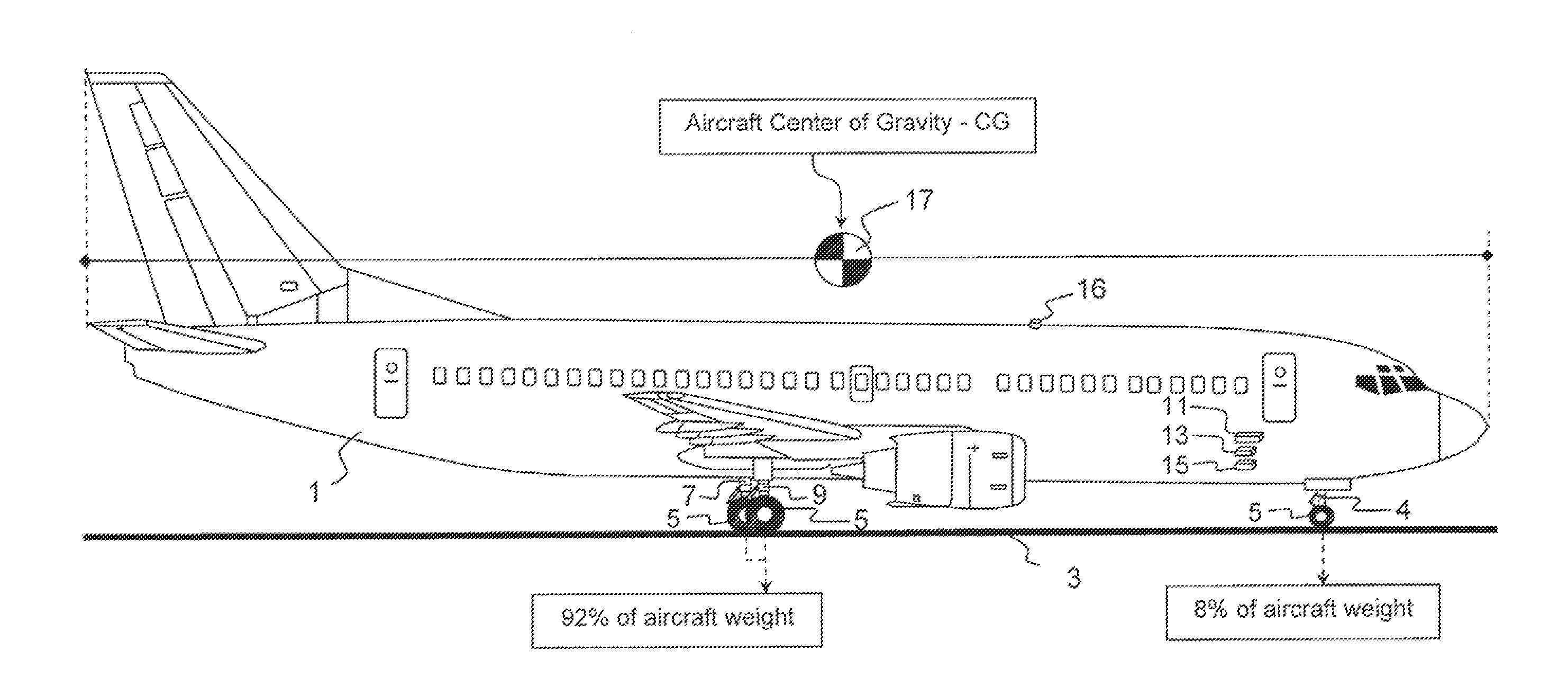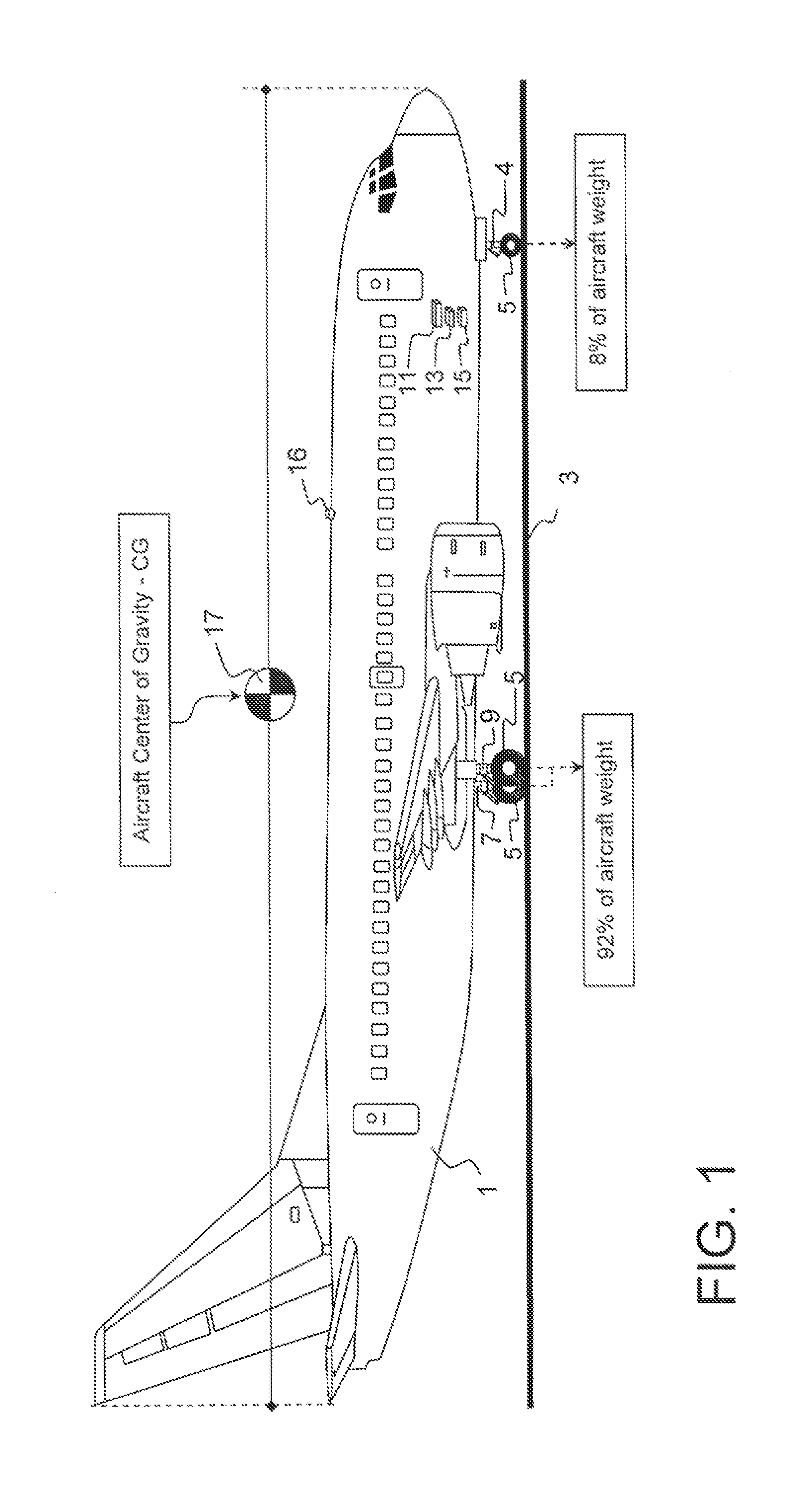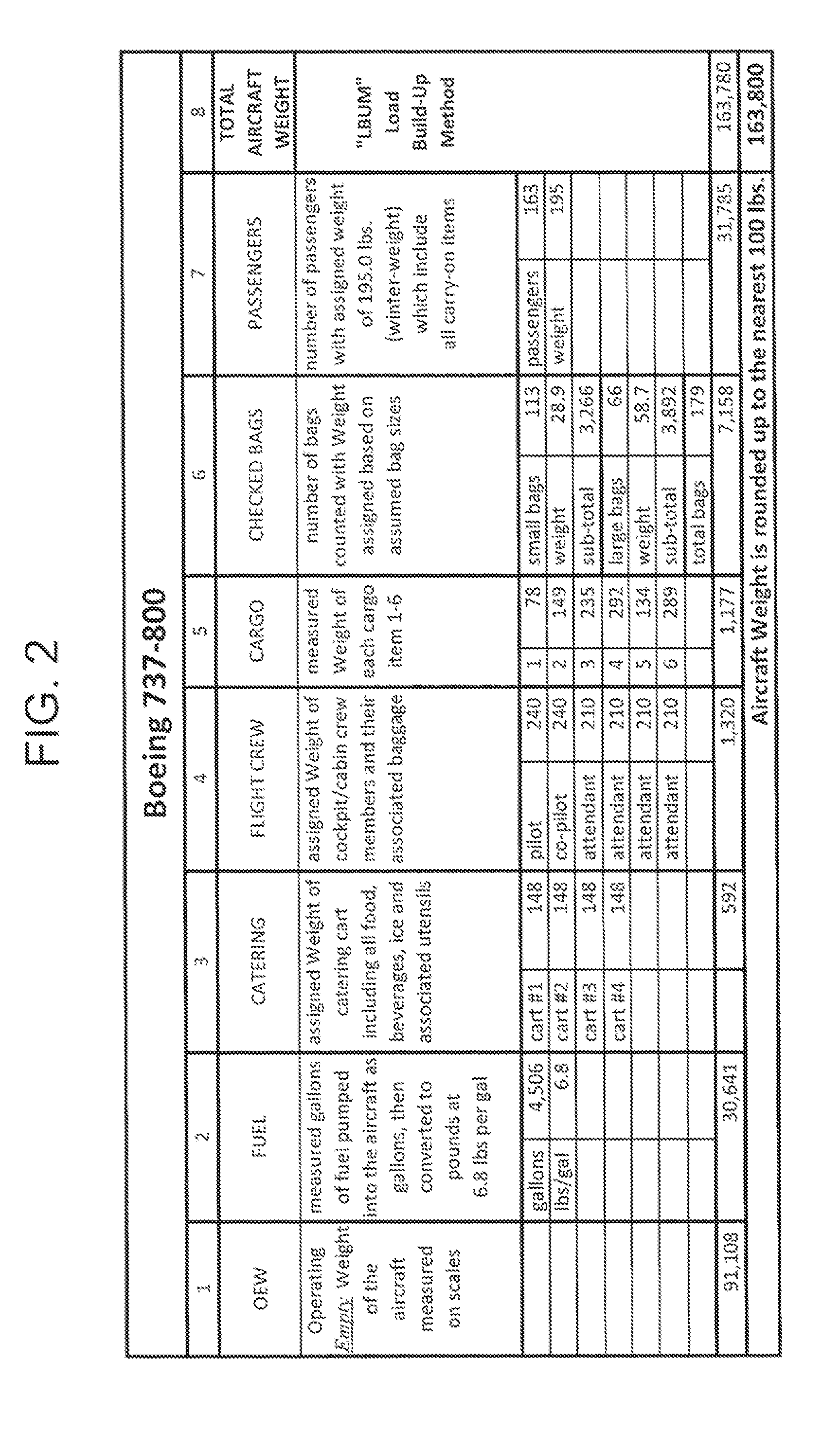Method for determining aircraft center of gravity independent of measuring aircraft total weight
a technology of aircraft center and total weight, which is applied in the direction of instruments, electric/magnetic computing, analogue processes for specific applications, etc., can solve the problems of aircraft aerodynamic drag, fuel is the most expensive item in an airline's annual expenses, and the airline's profit margin is slim
- Summary
- Abstract
- Description
- Claims
- Application Information
AI Technical Summary
Benefits of technology
Problems solved by technology
Method used
Image
Examples
Embodiment Construction
[0045]An aircraft is typically supported by plural landing gear struts. In many if not most cases, the aircraft is supported by three landing gear struts. Each landing gear strut is designed much like and incorporates many of the features of a telescopic shock absorber. The shock absorber of the landing gear strut comprises internal fluids of both hydraulic oil and compressed nitrogen gas. More simply said the weight of an aircraft rests on three pockets of compressed nitrogen gas. Pressure contained within the landing gear struts is measured in “psi”. With any object that has a “known total weight” which is resting on three independent points, and one of the three points has a measured weight, the combined weight supported by the remaining two points can be determined by subtracting the one measured weight from the known total weight.
[0046]The present invention offers a new method to determine aircraft CG. Total aircraft weight is determined independently of measuring the weight su...
PUM
 Login to View More
Login to View More Abstract
Description
Claims
Application Information
 Login to View More
Login to View More - R&D
- Intellectual Property
- Life Sciences
- Materials
- Tech Scout
- Unparalleled Data Quality
- Higher Quality Content
- 60% Fewer Hallucinations
Browse by: Latest US Patents, China's latest patents, Technical Efficacy Thesaurus, Application Domain, Technology Topic, Popular Technical Reports.
© 2025 PatSnap. All rights reserved.Legal|Privacy policy|Modern Slavery Act Transparency Statement|Sitemap|About US| Contact US: help@patsnap.com



